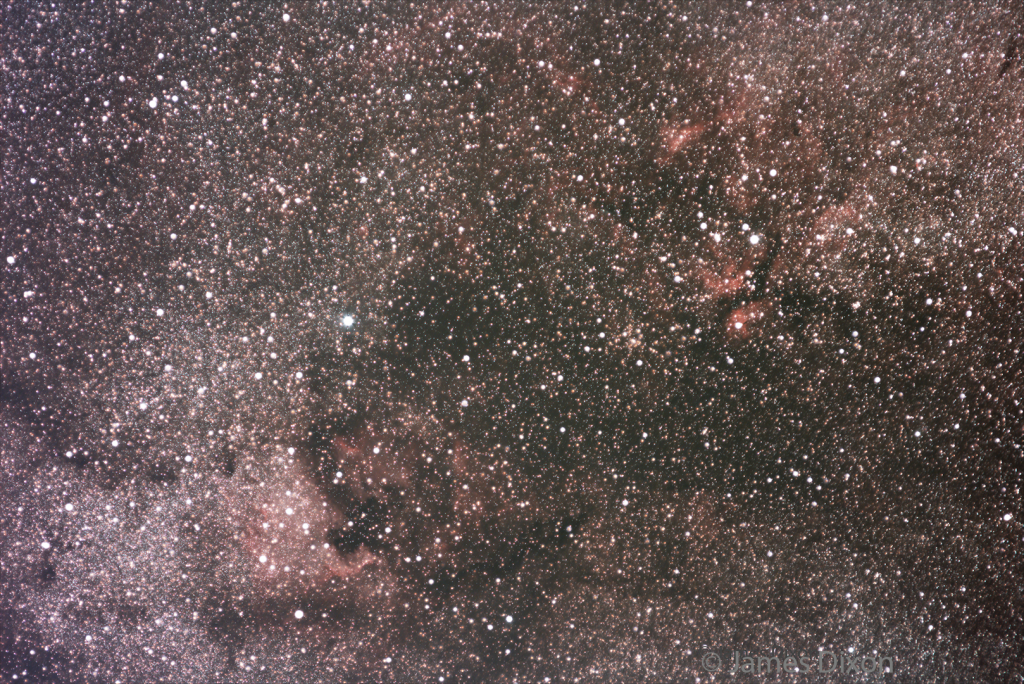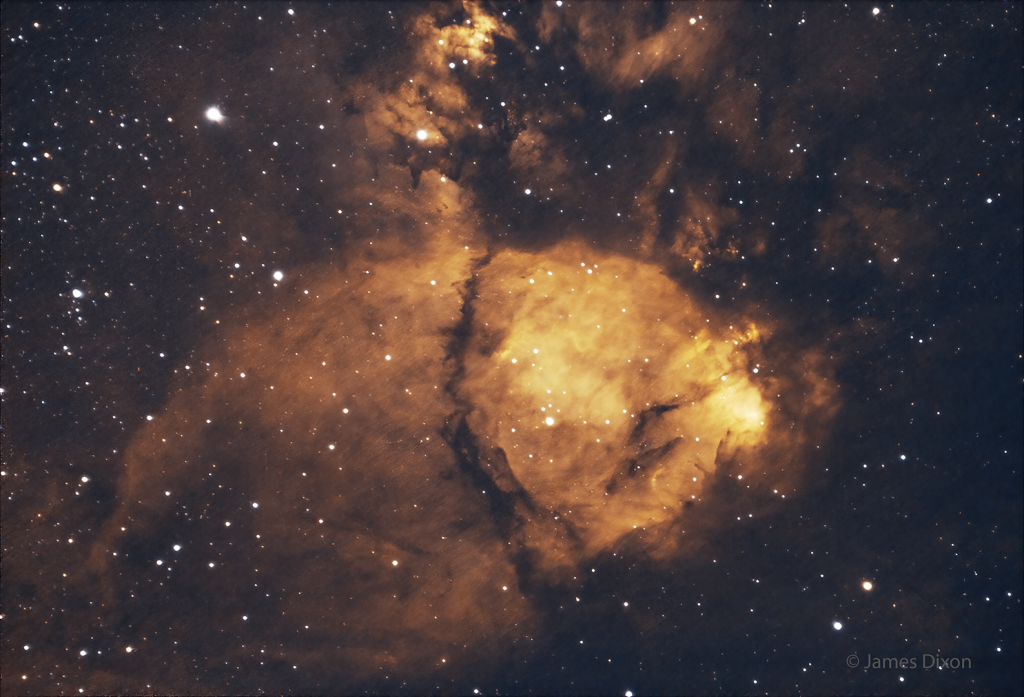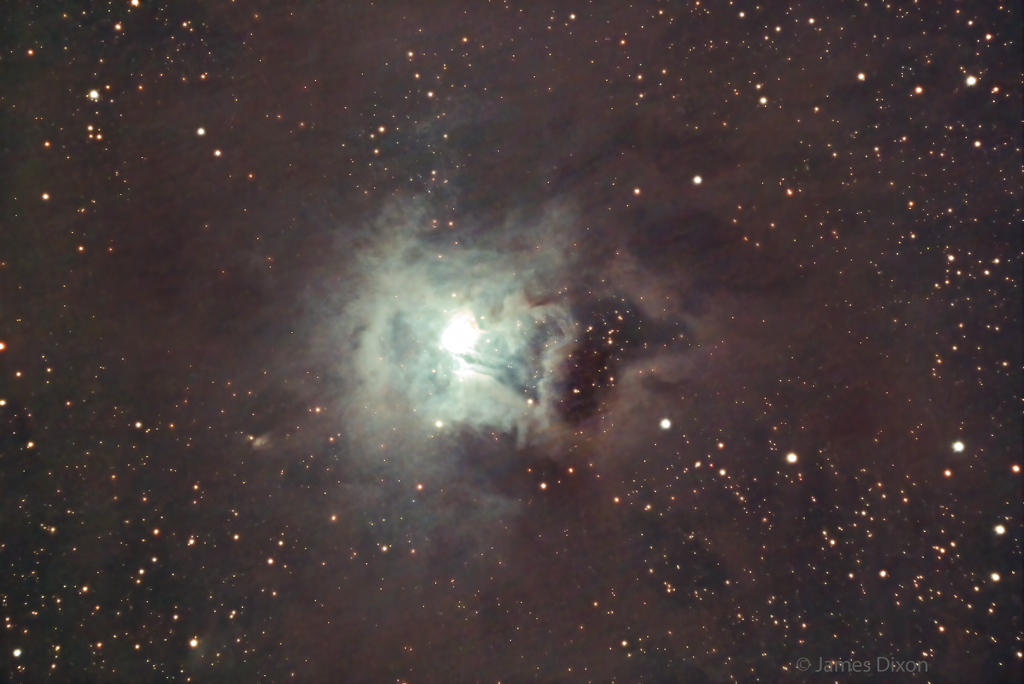If this image looks familiar it’s because I had one not too different several weeks back. This one has some differences though. This time, I used a fast (f/1.8) 85mm prime lens stopped down to f/2.5 instead of the 75mm-300mm kit zoom at f/4. I like this new lens not only because it is fast but because it is easy to focus too. I used my full spectrum modified Canon T5i. This was made from 45 two minute subs at ISO 800.
Look left of center, that bright star is Deneb, tail of the Swan. Go back to the center then at 2 o’clock, about halfway to the edge the brightest star is Sadr which is where the wings of Cygnus meet the body.
The nebulosity of this region is amazing. In the lower left, you can probably see the North America Nebula and to it’s right the less obvious Pelican nebula with a dark nebula separating them. In the upper right, surrounding Sadr, is the so called Sadr Region. It too is one or more emission nebulae separated by dark nebulae.



